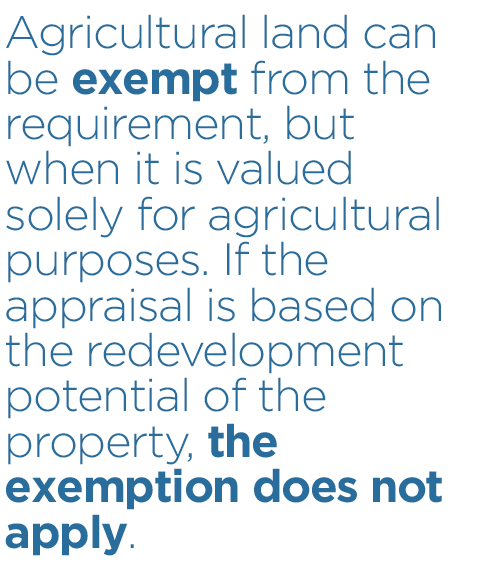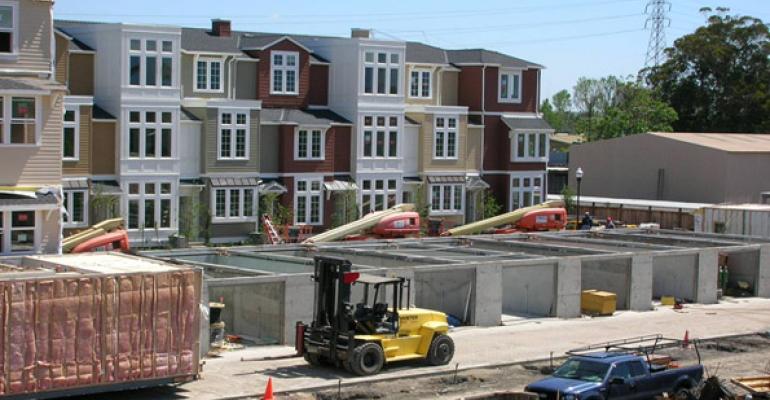Under today’s post-recession banking regulations, real estate development may become less profitable and real estate development loans more expensive. To offset potential losses from failed construction loans, regulated institutions are now required to set aside increased capital for High Volatility Commercial Real Estate (HVCRE) loans—those made to finance the acquisition, development or construction of real estate. As a result of these new rules, lenders are reporting increased related costs in the range of 40 to 150 basis points, depending on their specific situation. Some lenders are expected to pass this cost along to borrowers, while others may simply focus on more profitable transactions.
Not all loans are subject to the rules
HVCRE loans include credit facilities used to finance the acquisition, development or construction of real property, and reserve requirements apply throughout the life of the loan. However, a number of important exemptions to this rule exist, including loans that finance:
- One-to-four-family residential properties;
- Community development loans;
- The purchase or development of certain agricultural land;
- And other commercial real estate projects in which the loan-to-value (LTV) ratio is less than a supervisory ratio established by bank regulators, and the borrower has contributed equity of at least 15 percent of the appraised “as completed” value.
The devil is in the details
The requirements and applicability of the new HVCRE rules have caused significant discussion among banks and regulators. Regulators are continuing to work to provide a clear direction for implementation, and in April the OCC, FDIC and Federal Reserve Board jointly published answers and explanations regarding frequently asked questions which clarified some of the exemptions. Key points include:
 One-to-four-family residential properties are exempt from the requirement. According to our OCC contact, this applies whether the loan is for construction of a single home, or hundreds of homes. Though losses resulting from single-family development loans played a significant role in some of the bank failures that occurred during the recession, in a recent meeting, one regulator indicated that the exemption was based on “greater economic considerations,” rather than a perception of lower risk. Whether the exemption applies only to individual construction of these residential properties, or extends to developments including hundreds of homes, appears to remain open for guidance.
One-to-four-family residential properties are exempt from the requirement. According to our OCC contact, this applies whether the loan is for construction of a single home, or hundreds of homes. Though losses resulting from single-family development loans played a significant role in some of the bank failures that occurred during the recession, in a recent meeting, one regulator indicated that the exemption was based on “greater economic considerations,” rather than a perception of lower risk. Whether the exemption applies only to individual construction of these residential properties, or extends to developments including hundreds of homes, appears to remain open for guidance.
Community development loans include loans that satisfy certain federal requirements (12 CR part 25 and part 195). Note that SBA loans are not automatically considered to qualify for this exclusion.
Agricultural land can be exempt from the requirement, but when it is valued solely for agricultural purposes. If the appraisal is based on the redevelopment potential of the property, the exemption does not apply.
Other commercial real estate projects have accounted for the great majority of discussion. Requirements to comply with supervisory LTV ratios seem to be given, but the handling of equity contributions continues to account for the majority of questions brought before the regulators. Loans are exempt from the new reserve requirements when the borrower has contributed equity of at least 15 percent of the appraised “as completed” value before the advancement of any bank funds, and the equity may not be reduced during the term of the loan. Costs paid for land and certain development expenses can count toward the equity requirement, but the current value of land is not considered in this calculation. As a result, the equity injection associated with land acquired 10 years ago will be limited to the purchase price of the land, rather than the current market value. Developers may be tempted to flip owned properties to newly formed single-asset entities in order to realize the full value of their equity injection. Soft costs paid by the borrower, such as engineering costs, governmental fees, developer fees, etc., can be counted toward equity if they contribute to the completion and value of the developed property, but alternative collateral such as land, purchase deposits and the proceeds of other loans cannot. The ultimate impact of HVCRE requirements remains to be seen; but upward pressure on development costs and downward pressure on land values appear to be inevitable.
Bill Tryon is director of strategic development with Partner Engineering and Science Inc. He focuses on advancing key risk management initiatives from environmental, engineering and construction standpoints.

